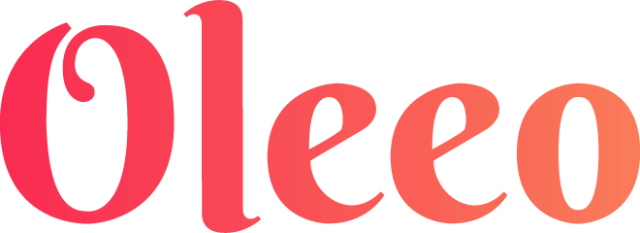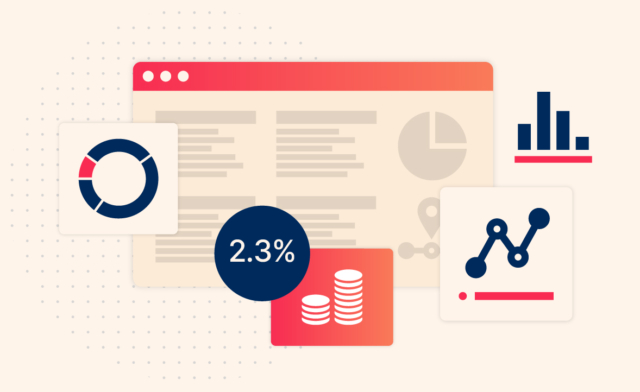Top 6 AI Use Cases in Recruitment in 2025: A Guide For Recruiters and HR Professionals

In recent years, conversations around AI in Recruitment have often focused on its ability to automate tasks like crafting job descriptions and adverts. While these are useful applications, they barely scratch the surface of AI’s transformative potential. By integrating AI into every stage of the recruitment process, from planning to onboarding, and enabling teams through governance and training, recruitment leaders can create a far more strategic and impactful talent acquisition function.
This blog explores how AI can elevate recruitment processes, fostering deeper connections between technology, people and organisational goals.
AI Use Cases In Recruitment: Planning
AI’s ability to analyse and predict trends makes it an invaluable tool in workforce planning. Recruitment leaders can use AI to anticipate talent needs by examining organisational growth, industry shifts and historical data. This ensures recruitment efforts are proactive rather than reactive.
AI can also facilitate alignment between hiring managers and recruiters. Simulated intake meetings and role definition tools eliminate ambiguity and help teams hit the ground running. Additionally, talent intelligence systems provide real-time insights into market conditions such as skills demand, geographic hotspots and competitor benchmarks.
AI transforms recruitment planning into a strategic exercise grounded in data-driven decisions that align hiring efforts with long-term organisational goals. It also plays a crucial role in AI-Driven Internal Mobility, helping organisations identify and retain top talent by matching existing employees to new opportunities within the company.
How to get started today:
First, let’s cover the simulated intake meeting. I find asking chatGPT the following prompt is a great starting point:
“I’m a recruiter for {{your organisation name}}, I have been given a requisition to hire for a {{job title}} in {{location}}. Can you give me the best agenda for a hiring manager kick-off meeting”
And then, once the agenda is created, follow it up with:
“Now, I would like you to take on the role of the hiring manager as well as the recruiter and go through this kick off meeting for this role.” (feel free to give chatGPT some context about the hiring manager)
You can also use tools like Foresight for strategic workforce planning and Talent Intelligence tools like LinkedIn Talent Insights.
AI Use Cases In Recruitment: Advertising
Crafting and distributing job adverts has always been a balance between art and science. AI enhances this by creating targeted, inclusive messaging tailored to specific candidate personas. Beyond writing job descriptions, AI analyses audience preferences and optimises campaigns in real time based on engagement metrics.
Dynamic campaign optimisation allows recruiters to adjust messaging, format and channels mid-campaign to maximise reach and candidate quality. These capabilities ensure that advertising budgets attract not just a high volume of applicants but the right talent.
AI empowers recruitment teams to create more personalised and effective outreach strategies that resonate with diverse audiences.
How to get started today:
A great prompt to get started with creating a great, targeted and inclusive job advert would be to follow-up to the above ‘hiring manager meeting simulation’ prompt with:
“Based on the hiring manager intake meeting, can you create an ideal candidate persona.”
Once the ICP (Ideal Candidate Persona) is created, you can then follow-up with this prompt (using the RISEN prompt framework – Role, Instruction, Steps, End Goal and Narrowing):
“Role: You are a copywriter with 20 years of experience creating the market-leading copy (including job adverts) for the recruitment industry.
Instruction: Create a comprehensive and inclusive, yet high-converting job advert that outlines the role, the business and the opportunity.
Steps: Use both the information gathered from the hiring manager kick-off meeting and the ideal candidate persona to draft the initial version. You should then check this for gender-powered wording and eliminate them as thoroughly as possible. For example, words such as competitive, dominant or leader are associated with male stereotypes, while words such as support, understand and interpersonal are associated with female stereotypes.
End Goal: Ensure the job advert is well-written, easy to understand and is completely unambiguous in the type of person that we are looking for.
Narrowing: Present the job advert using short paragraphs and bullet points. Be sure to include a clear job title, company information (mission, vision and culture), the job description, salary and benefits, why they should apply (what’s in it for them) location (including if it is remote etc.), qualifications, application process and a call to action. If you do not already have this information, ask me to clarify this for you, one section at a time, to ensure you have all the information you need.”
AI Use Cases In Recruitment: Screening
One of AI’s most transformative applications lies in automating early-stage screening. By evaluating CVs, applications and structured Q&A responses, AI tools can prioritise high-potential candidates. Beyond keyword matching, these systems enrich candidate profiles by pulling in external data, such as public achievements and professional networks, to create a fuller picture of their suitability.
AI doesn’t just save time; it helps uncover hidden gems. Candidates who might not meet traditional screening criteria but exhibit potential in less obvious ways are flagged for deeper review. This enables organisations to expand their talent pool beyond conventional measures.
By automating screening, AI not only accelerates hiring but also ensures a more equitable evaluation process.
How to get started today:
Lots of platforms offer help with screening at the top of the funnel. Most recently, Oleeo has released AI-powered Candidate-Matching technology to highlight the candidates who best match the role. But this doesn’t necessitate the requirement for a human recruiter to double check the AI output before moving candidates to the next stage of the hiring funnel.
AI Use Cases In Recruitment: Assessment
Interviews have long been a cornerstone of recruitment, but traditional methods often fail to capture a candidate’s full potential. AI-driven assessments introduce immersive, scenario-based evaluations that test candidates in real-world contexts, providing richer insights into their problem-solving abilities, adaptability and collaboration skills.
AI also reduces bias in assessments by standardising evaluation criteria and flagging patterns of unconscious discrimination. This ensures all candidates are evaluated fairly, fostering inclusivity and equity.
AI reimagines assessments as opportunities to identify the best talent while upholding fairness and objectivity.
How to get started today:
Platforms like Oleeo have re-written the way that we assess candidates in the new world of AI-powered applications. By negating the need for CVs and cover letters, we can now ask candidates to show us by giving candidates tasks that give insights into their skills and behaviours.
AI Use Cases In Recruitment: Onboarding
AI doesn’t stop being useful once a candidate is hired. It can transform onboarding into a personalised, engaging experience. AI-driven tools tailor onboarding schedules, learning modules and resources to the individual, ensuring new hires feel supported from day one.
Behavioural analytics can further enhance onboarding by tracking engagement and identifying potential challenges early. For example, AI might flag that a new hire is struggling to adapt to a particular workflow, prompting proactive intervention to address their needs.
AI ensures onboarding is not just efficient but also meaningful, setting employees up for long-term success.
How to get started today:
We know that the time between offer and start is the new battle ground when it comes to talent. With the number of non-starters and offer reneges increasing continuously, we need to rethink onboarding. Using tools like Hollaroo will completely change the way that you onboard your new employees, not only covering the ‘compliance’ aspect of onboarding, but creating a feeling of organisational belonging. Using proprietary algorithms, Hollaroo is also able to identify when engagement drops, nudging the recruiter/coordinator responsible to get in touch directly. This new way of onboarding results in a massive decrease in non-starters and a huge increase in time to productivity for new-starters.
AI Use Cases In Recruitment: Enablement
AI is as much about empowering people as it is about automating tasks. Recruiters and hiring managers must be equipped with the knowledge and tools to use AI effectively. Personalised microlearning programs can help teams understand AI’s capabilities, from bias mitigation to advanced sourcing techniques.
AI Governance in Recruitment plays a pivotal role here, ensuring AI systems are implemented ethically and responsibly. Regular audits, clear policies and transparent communication with candidates foster trust while aligning AI usage with organisational values.
AI also brings a new dimension to transparency. By sharing insights into how AI-driven decisions are made, organisations can build confidence among candidates and stakeholders alike. This openness creates accountability, ensuring AI serves as a tool for fairness and progress.
AI enablement is not just about technology. It is about building trust, transparency and ethical alignment.
How to get started today:
There are various ways that you can get started with enablement. Firstly, implementing a platform like Oleeo can provide a recruiter with access to over 28 recruiter enablement solutions, using the best AI, automation and orchestration techniques to radically simplify talent acquisition and save recruiters hours every day in completing their tasks. On the legal compliance side, Warden AI offers a way for recruiters to automate auditing their AI tools/processes for bias, a key requirement of any upcoming legislation relating to the use of AI in hiring, including the EU AI Act, New York Local Law 144 and others.
AI Use Cases In Recruitment: Endless Possibilities for the Future of Hiring
AI’s role in recruitment extends far beyond administrative tasks. When used strategically, AI becomes a partner in shaping a smarter, more inclusive talent acquisition function. From planning and advertising to screening and onboarding, its capabilities elevate recruitment teams to focus on what truly matters: building relationships and fostering organisational growth.
To fully realise AI’s potential, recruitment leaders must prioritise governance and enablement, ensuring ethical implementation and transparent practices. The future of recruitment lies in blending human judgment with AI’s precision, scalability and insight.
The recruitment of tomorrow begins with the decisions made today. Start small, experiment and scale your approach to transform the way you attract, hire and retain talent.


